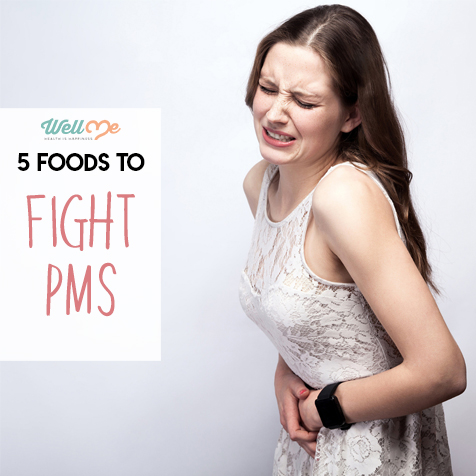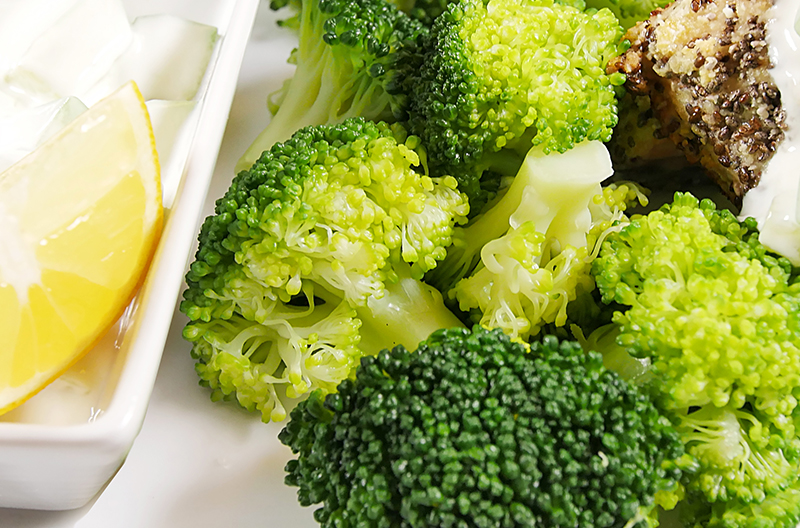If you’re a woman, you are probably all too familiar with PMS – nature’s lovely little gift that lets you know it’s “that time of the month”. Premenstrual syndrome, or PMS, affects each woman differently and, for some women, it can be very severe.
If you struggle with PMS on a monthly basis, you may be interested to know that eating certain foods might help to reduce your symptoms. Keep reading to learn more about reducing PMS symptoms through diet and to receive a taste recipe to try out at home.
Recipe for Chia-Crusted Salmon and Steamed Broccoli
This recipe is surprisingly simple to prepare and it is one the whole family will love. The salmon and yogurt provide high levels of vitamin D while the chia seeds offer healthy fats.
Ingredients:
- 4 (6-ounce) salmon fillets
- Salt and pepper
- 1 large egg, whisked
- ¼ cup almond flour
- ¼ cup chia seeds
- 3 tablespoons olive oil
- 4 cups chopped broccoli florets
- ½ cup low-fat yogurt, plain
- 1 tablespoon fresh lemon juice
- 1 tablespoon fresh lemon zest
- 1 clove garlic, minced
- 1 small cucumber, peeled and diced
Instructions:
- Preheat the oven to 350°
- Season the salmon with salt and pepper to taste then dip in the egg.
- Stir together the almond flour and chia seeds then dredge the salmon in the mixture.
- Heat the oil in a large skillet over medium-high heat.
- Add the salmon and cook until seared on one side, about 3 minutes, then transfer to a baking sheet.
- Bake for 6 to 8 minutes until the flesh flakes easily with a fork.
- Meanwhile, place a steamer insert in a saucepan and fill with ½ inch of water.
- Add the broccoli and bring to a boil then cook until tender.
- Combine the remaining ingredients in a bowl to make the yogurt sauce.
- Serve the salmon hot with a dollop of the yogurt sauce and the steamed broccoli.
While preparing and enjoying this recipe may not immediately resolve your PMS symptoms, including the five foods mentioned in this article in your everyday diet may help. If you continue to experience severe symptoms of PMS, you may want to talk to your doctor because it could be something more serious like premenstrual dysphoric disorder, or PMDD.
What is PMS, Anyway?
According to Always.com, premenstrual syndrome is a combination of symptoms that affect women during the week or so before they get their period. These symptoms may come on gradually or they can appear quite suddenly, but they usually resolve once you start your period[1]. The most common symptoms of PMS include the following:
- Cramps
- Breast tenderness
- Backache
- Depression
- Headache
- Bloating
- Skin problems
- Mood changes
Though the symptoms of PMS are widely known, the underlying cause for the condition is not. Scientists know that the symptoms of PMS are related to the hormonal changes that occur at that time of the month, but the exact reason for these changes are unknown. As many as 75% of women go through PMS on a monthly basis so, if you suffer from these symptoms, you are not alone! Keep reading to learn about some of the best foods to reduce PMS symptoms.
Which Foods Reduce PMS Symptoms?
Many women take over-the-counter pain relievers and other medications to reduce the symptoms of PMS, but they don’t always work. If you’re looking for a more natural solution, try including the following five foods in your daily diet:
- Low-Fat Yogurt – Rich in calcium, low-fat yogurt can lower your risk for PMS by up to 40%. Research conducted by the University of Massachusetts at Amherst suggests that the combination of calcium and vitamin D provides the best result.
- Wild Salmon – Like yogurt, wild salmon is rich in vitamin D. Research suggests that getting at least 100 IUs of vitamin D per day can greatly reduce PMS symptoms such as irritability and breast tenderness.
- Broccoli – This lovely green vegetable is packed with nutrients that help to reduce PMS symptoms – nutrients like calcium, potassium, magnesium, vitamin A, vitamin C, and vitamin E.
- Eggs – As a rich source of vitamins B6, D, and E, eggs can reduce PMS symptoms, particularly some of the mental symptoms like irritability and mood swings.
- Chia Seeds – These tiny little seeds are packed with nutrition, including nutrients like omega-3 fatty acids that help to improve mood, combatting the mental symptoms of PMS.

While it may not seem like these five foods go together, including each of them in your daily diet may help you to reduce PMS symptoms. Keep reading to find a recipe that includes all five foods.
References
- [1] “What is PMS?” Always.com. <https://always.com/en-us/tips-and-advice/your-first-period/what-is-pms>








